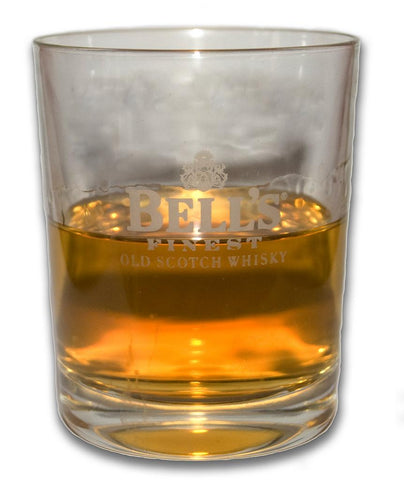Tastes of Scotland

A tale of true Scottish scran!
Och aye! If there’s one thing that us Scots love, it’s a good swally, a tasty feast with a few drinks and some good company. However, don’t be misled. There’s much more to Scottish cuisine than deep fried mars bars and haggis. Although we do love classic haggis neeps and tatties on Burns night! If you delve into the coastal towns, rural villages and farmlands, then you’ll uncover some lesser known, but equally delicious traditional Scottish food and drinks that have great value to Scottish culture and heritage.
What are Protected Geographical Indications (PGI)?
Put simply, Protected Geographical Indications are given to produce that is recognised by quality and characteristics in association with the geographical location that they originate from.
Why are PGI’s important in the culinary world?
A PGI can be viewed as a type of trademark, therefore it prevents other people or businesses in the EU from misleading customers with replicated products that claim to be of origin from a particular place. All producers within the area have certain rights that allow them to produce a famous local product as long as it meets the quality standards expected.
Not only does it help to limit imitation products that can steal custom from genuine local farmers or distilleries. But, it also aims to protect the reputation of the location and its famed product.
For example, if a customer purchases a bag of what they believe to be Ayrshire new potatoes. They are recognised for their nutty, earthy flavour often said to come from their coastal region and early harvest. If the potatoes do not live up to this expectation, then the customer will likely not purchase again and the reputation of the produce is harmed and it is this reputation for high quality that can also allow a premium price to be charged. Leaving an unhappy customer potentially wanting their money back for a non-authentic product!
Sample some of Scotland’s PGI food and drinks
Here are some examples of produce and recipes that originate from different towns and areas across Scotland. How many have you tried?
Scottish Wild Salmon

Wild salmon caught in Scottish waters are known for being an extremely fresh, juicy cut of fish with the distinct pink colour and vibrant flavour. Scottish white salmon have a shiny silver skin and due to the rough coastlines and high currents the fish tend to be strong and high in fat. You’ll find a lot of restaurants in Scottish coastal towns serving up fresh salmon and you can pick up fillets from your local supermarket.
Scotch Lamb
Lamb has been a Sunday roast favourite for generations, but what makes Scotch lamb that little bit different? Well, the sheep must be born and raised on Scottish land, and key to their protection is that farmers must follow strict guidelines on animal welfare and wellbeing that ensure a quality, traditional tasting product.
Dundee Cake

One for those with a sweet tooth! Dundee cake is a traditional Scottish fruit cake with the recipe dating back to the 1700s in the city of Dundee. Nuts, dried fruits and fruit peels give the cake its flavour and Dundee cake is distinctly decorated on top with a round of almonds and other nuts.
Stornoway Black Pudding
Originating from the Western Isles of Scotland, Stornoway black pudding is famed for its rich meaty flavour, firm juicy texture and gentle seasoning that isn’t overly spicy. Using suet beef means that there aren't the same fat lumps as regular black pudding, however, you’d have to pop over to Stornoway on Lewis to uncover the exact blend of seasoning and production method that creates the famous flavour!
Ayrshire New Potatoes

We’ve already touched on this one, but Ayrshire new potatoes hold a significant value in Scottish agriculture heritage. They derive from the Solanaceae family of potatoes and are harvested prematurely at the end of July before main crops. They have a nutty, earthy flavour and are sold with the light coating of soil still on their skin as it helps to keep the skin soft. Another characteristic that is famously associated with the crop. Many Scots will proclaim Ayrshire new potatoes to be some of the best around!
Arbroath Smokies
Arbroath smokies are freshly caught haddock which are smoked over hardwood in the coastal town of Arbroath on the East of Scotland. Using traditional methods that date back centuries, the fish is salt-dried before being hung to smoke. It’s this process that gives it its distinctive flavour that combines sweet and a salty, with a smoky edge. The haddock skin is dried and slightly crispy, whilst the fish meat inside is juicy and breaks into small pieces. You must try Arbroath Smokies if you ever pass by the town!
Scotch Whisky

Easily one of Scotland’s most famous exports is Scotch whisky. To meet the standards of a true Scotch whisky it must be distilled here in Scotland, using water and malted barley (sometimes whole grains can be added). There is then a strict fermentation process that distilleries must follow and guidelines on what the percentage of alcohol must meet. Finally, the spirit must be matured for a minimum of three years, in a warehouse using oak casks and again, they must be stored in Scotland.
Some of Scotland’s most famous Scotch Whisky brands include Glendfiddich, Johnnie Walker Black Label and Highland Park.
If you'd like to learn more about Scotland's culinary heritage and especially the wild food and drink sector we care about the most then be sure to check out the Scottish Wild Food Festival taking place 18th-19th of September 2021. The Highland Boundary team will be pitching up with our Wild Cocktail Bar to serve some of the amazing flavours in our own countryside, so don't be shy and come a long to say hello!






